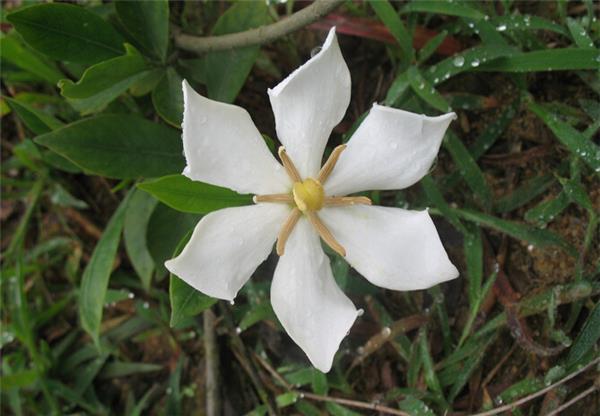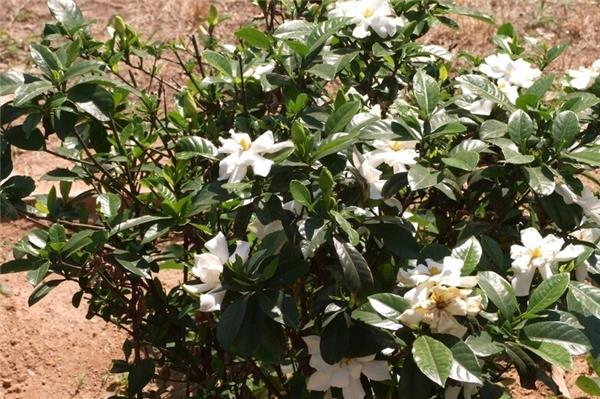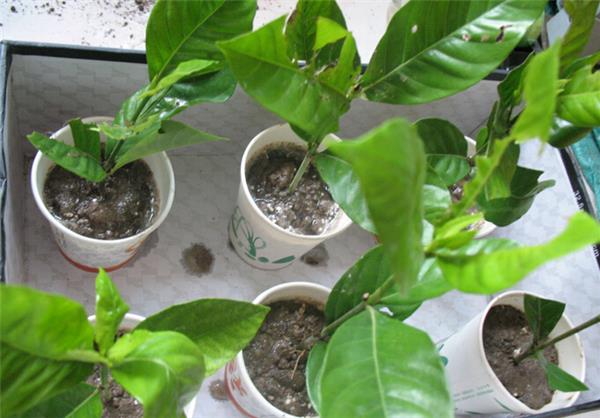When do gardeners bloom and how do gardeners bloom?
Gardenia belongs to Rubiaceae. Evergreen shrubs. Simple leaves opposite or 3-leaf whorled, leaf blade Obovate, leathery, emerald green and glossy. The flowers are white and fragrant. Berries ovate, yellow or orange. So, when will the gardenia bloom?

When will the gardenia bloom?
Gardenia likes warm, moist, adequate light and well-ventilated environment, but avoid strong light exposure, suitable for living in a slightly shaded place, resistant to semi-shade, afraid of stagnant water, more cold-resistant, can only be used as greenhouse potted flowers in Northeast, North China and Northwest China. The flowering period of gardenia is from March to July and the fruiting period is from May to February of the following year.
Gardenia grows like one in the four seasons, the leaf color is evergreen, the fragrance is elegant when blooming, and the white flowers are white, which is particularly beautiful and very attractive. It is often used in courtyards, balconies and other places for potted plants, it has a strong environmental adaptability, can grow well in these places, it has a strong decorative and ornamental effect, then, is there any way to make gardenia blossom?
How to make gardenia blossom?
Choose the right basin soil. Gardenia is a typical acidic flower, so the slightly acidic environment of the soil is the key to determine the growth of gardenia. Cultivation soil can choose rotten leaf soil, peat soil or retting sawdust plus half of the garden soil, avoid using old wall soil and cinder, with the market of gentleman orchid soil is more convenient and practical.
2. Scientific watering. Gardenia likes moist soil and high air humidity. Keep the soil moist during the growth period from April to September. The surface of the basin soil is watered when it is dry, and a spray can be used to pour water on the leaf surface at night. If it is dry and wilted, it will be bad for growth. If the growth is too prosperous and the internodes are longer, they will not be watered in the evening and will be watered again when the sun comes out in the morning.

-- 3. Rational fertilization. Gardenia likes fertilizer, and 3% rotten cake fertilizer can be added to the culture soil as base fertilizer. During the growing season, the alum fertilizer made by cake fertilizer and ferrous sulfate retting is watered once a week, or 0.1% humic acid total nutrient organic liquid fertilizer can be used. Watering 0.1% potassium dihydrogen phosphate aqueous solution once or twice in the bud stage can make the flowers fat and fragrant. Fertilizer is stopped when the temperature is above 35 ℃ in hot summer and below 15 ℃ in autumn.
-- 4. Light. Gardenia flowers like light and can grow in semi-shade for a long time, but the flower branches are longer and the flowers are less. In addition to the strong light from July to August noon need shade and winter dormancy period, generally need to be maintained in the sun in order to blossom and flourish.
Pure white flowers and faint green leaves are a major feature of gardenia. The short gardenia tree is a green plant planted at home as a pot, used to watch and improve air quality. So, what are the distinctive characteristics of gardenia?

Characteristics of Gardenia jasminoides
1, gardenia like fertilizer, it is appropriate to apply balanced and peaceful organic fertilizer, soy bean cake, sesame sauce residue, peanut bran, etc., after fermentation can be acidic fertilizer, but only thin fertilizer frequently, avoid thick fertilizer, raw fertilizer.
2. Gardenia likes flowers in a humid environment, but if they are watered too much, too much moisture in the basin soil will reduce the air in the soil, injure the roots, and make the leaves blacken and lose leaves.
Gardenia jasminoides also needs iron to moisturize, and iron deficiency will lead to chlorosis.
4. Excessive light will also cause leaves to yellowing or even fall off.
In the flowers, gardenia is undoubtedly one of the more familiar flowers, people like to breed at home, but many people do not know much about the breeding methods of gardenia, the following is to introduce the breeding methods of gardenia and matters needing attention.
Culture methods and matters needing attention of Gardenia jasminoides
1. Soil: gardenia likes to grow in acidic soil, so when buying gardenia soil, pay attention to choose acidic soil for culture, and pay attention to soil pH value between 4.0 and 6.5, so soil selection is also very important for culture.

Temperature: the most suitable temperature for the growth of Gardenia jasminoides is 18 ℃-22 ℃, which is suitable for overwintering for 5-10 ℃. If the temperature is lower than-10 ℃, it is easy to freeze. Too low temperature and too high temperature are extremely disadvantageous to the growth. In summer, gardenia should be maintained under a sparse forest or shady shed with good ventilation, high air humidity and light transmission. In winter, it should be placed in a sunny environment of not less than 0 ℃, and let it dormancy naturally. If the temperature is too high, it will affect the flowering next year.
Moisture: gardenia likes to be moist and should be watered appropriately during the growing period. Each watering should be carried out after the basin soil is whitened and must be watered thoroughly at one time. In hot and dry summer, foliar water should be sprayed 2-3 times a day to increase air humidity and help plant cool down. Gardenia flower should not be watered too much after budding, so as not to cause its bud to fall. It is better to water dry in winter to prevent stagnant water from rotting roots.
4, sunshine: gardenia in the growth period, but also should pay attention to the right amount of light needs, gardenia is a plant that loves light, so it is recommended that in the spring and autumn period, pay more attention to increase the lighting time, and to the summer and winter season, it is recommended to put the same share of light indoor culture, to avoid the growth period, the temperature is too high or too low.

Fertilizer: gardenia has a very high demand for nutrients. In order to meet the demand for fertilizer during the growth period of gardenia, it is recommended that during the period of vigorous growth of gardenia, bean cake, sesame sauce residue, peanut bran and other fertilizers should be applied every half a month, which is also conducive to the blooming of many and exuberant flowers.
Pruning: gardenia sprouting is very strong, easy to overlap branches, resulting in airtight, nutrition dispersion, so pay attention to timely pruning. In the construction, three main branches should be selected according to the shape of the tree, and other branches sprouting from the roots should be cut off at any time. Gardenia flowers should be truncated in time to promote the germination of new branches. When the new branch of gardenia grows out of three nodes, it is necessary to pick the heart immediately so as not to grow blindly.

I hope the introduction of the editor will let you understand the florescence of gardenia, which will be helpful for you to cultivate gardenia in the future. Gardenia is one of the difficult flowers recognized by flower lovers. In fact, any kind of plant only needs to understand its living habits, according to its requirements, give it a suitable environment and a proper management, every kind of plant is not difficult to raise, gardenia is no exception.
It must be thoroughly watered at once. In hot and dry summer, foliar water should be sprayed 2-3 times a day to increase air humidity and help plant cool down. Gardenia flower should not be watered too much after budding, so as not to cause its bud to fall. It is better to water dry in winter to prevent stagnant water from rotting roots.
4, sunshine: gardenia in the growth period, but also should pay attention to the right amount of light needs, gardenia is a plant that loves light, so it is recommended that in the spring and autumn period, pay more attention to increase the lighting time, and to the summer and winter season, it is recommended to put the same share of light indoor culture, to avoid the growth period, the temperature is too high or too low.

Fertilizer: gardenia has a very high demand for nutrients. In order to meet the demand for fertilizer during the growth period of gardenia, it is recommended that during the period of vigorous growth of gardenia, bean cake, sesame sauce residue, peanut bran and other fertilizers should be applied every half a month, which is also conducive to the blooming of many and exuberant flowers.
Pruning: gardenia sprouting is very strong, easy to overlap branches, resulting in airtight, nutrition dispersion, so pay attention to timely pruning. In the construction, three main branches should be selected according to the shape of the tree, and other branches sprouting from the roots should be cut off at any time. Gardenia flowers should be truncated in time to promote the germination of new branches. When the new branch of gardenia grows out of three nodes, it is necessary to pick the heart immediately so as not to grow blindly.

I hope the introduction of the editor will let you understand the florescence of gardenia, which will be helpful for you to cultivate gardenia in the future. Gardenia is one of the difficult flowers recognized by flower lovers. In fact, any kind of plant only needs to understand its living habits, according to its requirements, give it a suitable environment and a proper management, every kind of plant is not difficult to raise, gardenia is no exception.
Related
- Wuhan Hospital Iron Tree Blooming Result Was Instantly Frightened by the Gardener Master
- Which variety of camellia is the most fragrant and best? Which one do you like best?
- What is the small blue coat, the breeding methods and matters needing attention of the succulent plant
- Dormancy time and maintenance management of succulent plants during dormancy
- Minas succulent how to raise, Minas succulent plant pictures
- What are the varieties of winter succulent plants
- How to raise succulent plants in twelve rolls? let's take a look at some experience of breeding twelve rolls.
- Attention should be paid to water control for succulent plants during dormant period (winter and summer)
- Watering experience of twelve rolls of succulent plants
- Techniques for fertilizing succulent plants. An article will let you know how to fertilize succulent plants.



